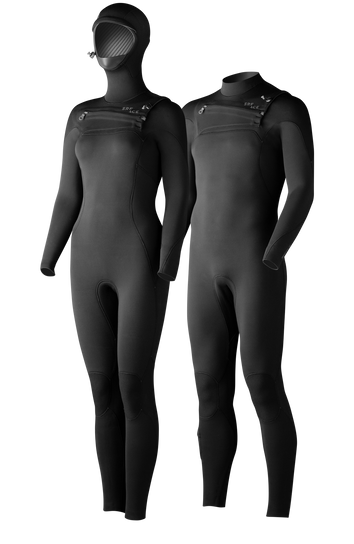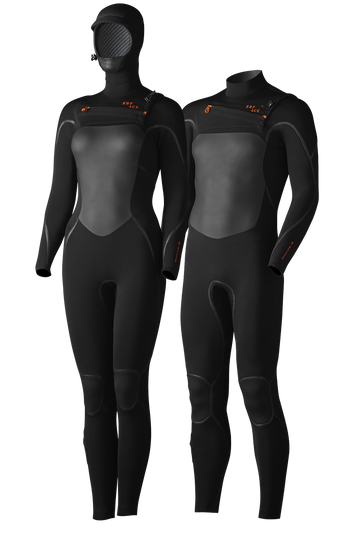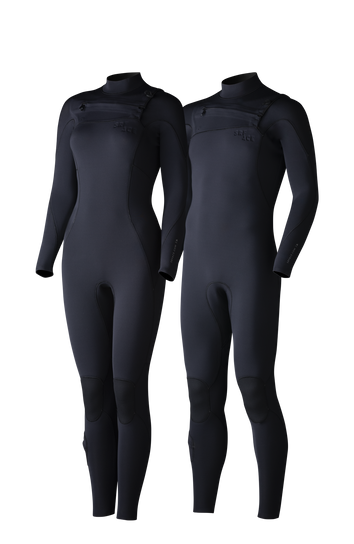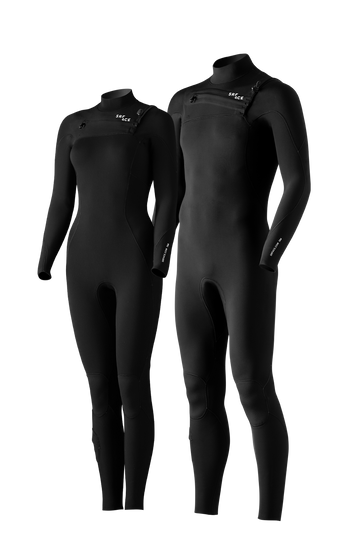
HOW TO RECYCLE A WETSUIT
There is a lot of focus on making wetsuits more sustainable by adopting new production technologies and green material innovations. However, we can’t only leave reducing a wetsuit’s carbon footprint up to the manufacturers. There is a lot you can do to make surfing and wetsuits more eco-friendly. There is no need to throw your used wetsuits into a landfill just yet. The process of wetsuit recycling remains a challenge, but small steps are being made to improve this.
 BUY HIGH-QUALITY PRODUCTS
BUY HIGH-QUALITY PRODUCTS
To avoid unnecessary neoprene waste, try buying a high-quality wetsuit. Especially one that lasts long, doesn’t fade or go out of fashion next season. When buying a new wetsuit, make sure it is made with the most sustainable materials and technologies that you can afford. Not sure what colour wetsuit to choose? Black is by far the most sustainable colour used in wetsuits. Darker colours, in general, fade less and can be made with less pollutive pigments. However, neon coloured materials are the worst for the environment.
Featured wetsuits
WETSUIT RECYCLING
It’s still impossible to recycle neoprene itself back into raw neoprene to make new wetsuits. The combination of different materials used in one wetsuit make this a challenge. However, there’s a great way to give your wetsuit a second life. By shredding it into pieces, neoprene can be up-cycled into qualified products such as a new yoga mat. Other examples of recycled neoprene products are boxing bag fillings.
DONATE TO CHARITY
Consider donating your used wetsuit to charity. For instance when it’s still in good shape, but you don’t have use for it anymore. There are many NGO programs that help kids get off the street by teaching them how to surf.
RECYCLED NEOPRENE WASTE MATERIALS
To ensure a wetsuit produces minimal waste material, it is important that a wetsuit designer develops the best possible panel layout. This results in the most efficient patterns with the lowest yield rate. This makes for better cutting efficiency when cutting single panels out of a fixed size neoprene sheet. Our wetsuit manufacturer recycles their neoprene cutoff waist and makes qualified products with it. Unfortunately, there are lots of small wetsuit factories that don’t care as much about the environment and throw offcuts into landfills.
 ECO CARBON BLACK
ECO CARBON BLACK
Neoprene raw material is a yellow colour. But all neoprene foam used in wetsuits is black. One of the important ingredients of limestone neoprene is also what colours it black. This ingredient, eco carbon black, is now harvested by recycling scrap rubber tires. This significantly reduces energy consumption and CO2 emission during the neoprene production process.
BIODEGRADABLE PACKAGING
When buying a wetsuit online, the most sustainable way to ship it is in compact, biodegradable cardboard packaging. Cardboard reduces shipping volume, allowing couriers to carry more parcels per trip, which in turn lowers fuel consumption and reduces CO2 emissions. Always remember to reuse or recycle your packaging when buying products online.

SRFACE PACKAGING
SRFACE ships all wetsuits in biodegradable cardboard packaging. We've designed our packaging to be durable enough to protect your wetsuit throughout its journey from our factory to your doorstep. The compact design minimizes material use and environmental impact.
Biodegradable cardboard is not only recyclable but also compostable under the right conditions. By choosing sustainable materials and reducing waste wherever possible, we aim to leave a lighter footprint with every order.
NEW TECHNOLOGIES
SRFACE is always on the lookout for new sustainable ways to lower our carbon footprint. Innovations in the wetsuit production process, materials, technologies and recycling initiatives. Do you have a great idea that we should look into? Let us know, we’re all ears.

Ready to surf?
Shop from €159







